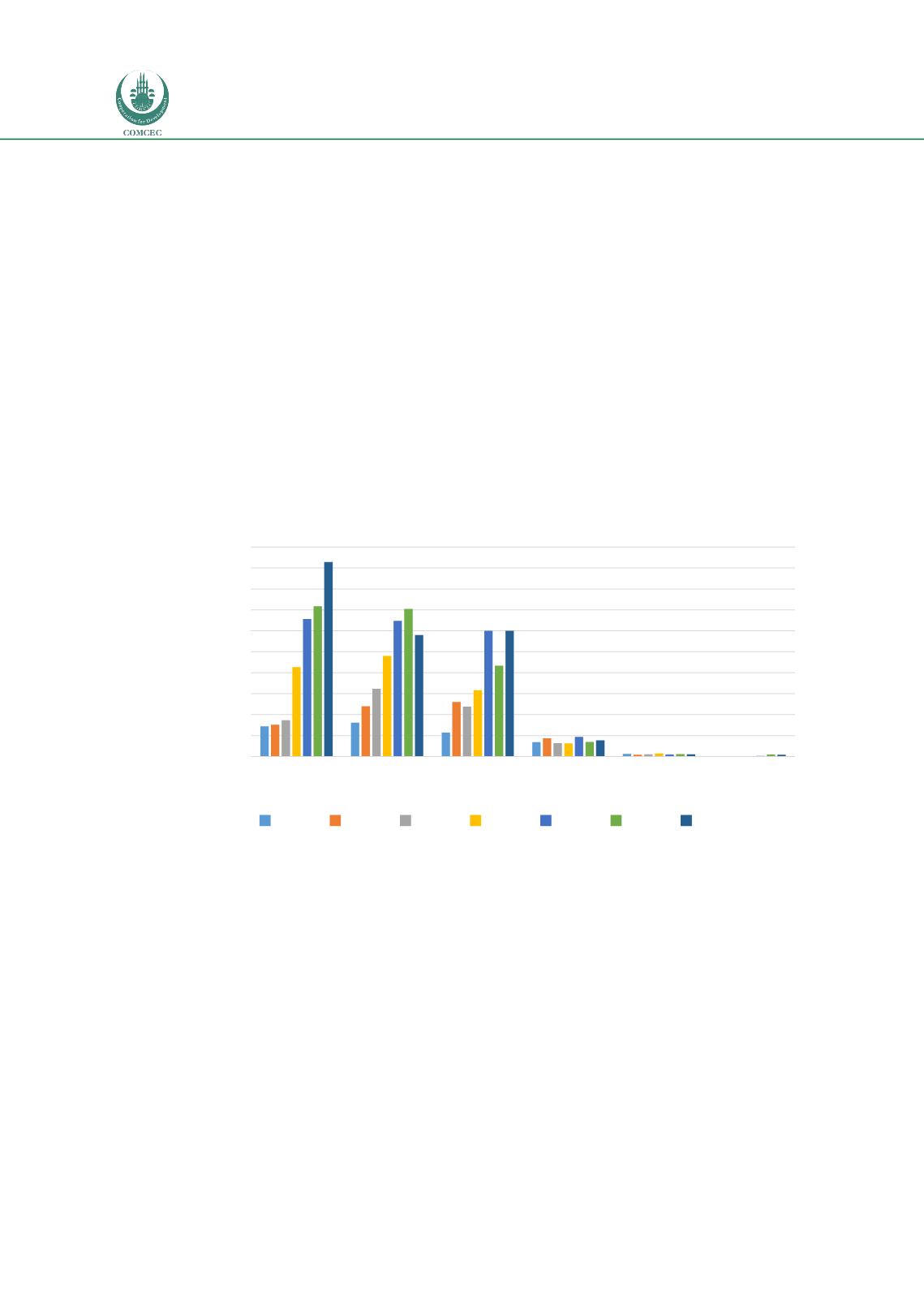

Reducing Postharvest Losses
In the OIC Member Countries
79
0
1,000,000
2,000,000
3,000,000
4,000,000
5,000,000
6,000,000
7,000,000
8,000,000
9,000,000
10,000,000
Wheat
Maize Rice, paddy Sorghum Barley
Rye
Annual production (tonnes)
1961 1970 1980 1990 2000 2010 2014
CASE STUDIES
4.
The approach for the case studies has been discussed in the introduction. These were a
combination of desk based studies for four commodity groups (cereals, root and tuber crops,
oilseeds and pulses and milk and dairy products) and field trips (fruit and vegetables, meat
and meat products and fish and seafood products). Each case study is reported below.
4.1.
Cereals in Egypt
This was a desk based study and is based on available published literature.
4.1.1.
Status and Importance
The main cereal grains grown in Egypt are wheat, maize, rice, sorghum, and small quantities of
barley and rye
(Figure). Production of wheat, maize and rice have increased significantly since
1980.
Figure 10: Production trends of main cereal crops in Egypt
Source: FAOSTAT 2016
However, since the 1990s Egypt has also had to import about 50% of its wheat and maize
requirements. The population has also increased rapidly, and there are now over 91 million
people in Egypt, of whom 43% are urban-based. Egypt had a per capita GDP of USD$3,366 in
2014, with 2.2% GDP growth in 2014 and 10.4% inflation in 2015 (World Bank, 2016)
Wheat is the key staple food crop in Egypt, it is consumed mainly as bread and provides, on
average, about one-third of the daily caloric intake of consumers and 34% of their daily protein
consumption. Because it is such an important component of the daily diet, particularly for the
poor, and because Egypt is only 51% self-sufficient in wheat production it follows that wheat
policy is central to food security in Egypt (Siam and Croppenstedt, 2007). The import-related
high exposure to international markets implies an unacceptably high risk to the country’s
wheat supply, and clearly acts as an incentive for the Government to support domestic
















